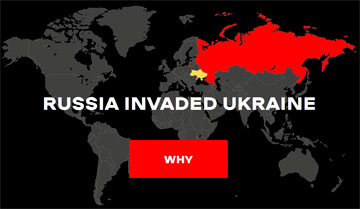Multiple vulnerabilities in HPE Intelligent Management Center
| Risk | Low |
| Patch available | YES |
| Number of vulnerabilities | 3 |
| CVE-ID | CVE-2018-7114 CVE-2018-7115 CVE-2018-7116 |
| CWE-ID | CWE-120 |
| Exploitation vector | Network |
| Public exploit | N/A |
| Vulnerable software |
HPE iMC PLAT Hardware solutions / Routers & switches, VoIP, GSM, etc |
| Vendor | HPE |
Security Bulletin
This security bulletin contains information about 3 vulnerabilities.
1) Buffer overflow
EUVDB-ID: #VU16187
Risk: Low
CVSSv4.0: 4.8 [CVSS:4.0/AV:L/AC:L/AT:P/PR:N/UI:N/VC:H/VI:H/VA:H/SC:N/SI:N/SA:N/E:U/U:Clear]
CVE-ID: CVE-2018-7114
CWE-ID:
CWE-120 - Buffer overflow
Exploit availability: No
DescriptionThe vulnerability allows a local unprivileged attacker to execute arbitrary code on the target system.
The vulnerability exists due to buffer overflow. A local unauthenticated attacker can trigger memory corruption and execute arbitrary code with elevated privileges.
Successful exploitation of this vulnerability may result in complete compromise of vulnerable system.
MitigationUpdate to version 7.3 E0605P06.
Vulnerable software versionsHPE iMC PLAT: 7.3 E0504P2 - 7.3 E0605P04
CPE2.3- cpe:2.3:h:hpe:hpe_imc_plat:7.3 E0504P2:*:*:*:*:*:*:*
- cpe:2.3:h:hpe:hpe_imc_plat:7.3 E0504P4:*:*:*:*:*:*:*
- cpe:2.3:h:hpe:hpe_imc_plat:7.3 E0506P03:*:*:*:*:*:*:*
https://support.hpe.com/hpsc/doc/public/display?docId=hpesbhf03906en_us
Q & A
Can this vulnerability be exploited remotely?
No. This vulnerability can be exploited locally. The attacker should have authentication credentials and successfully authenticate on the system.
How the attacker can exploit this vulnerability?
The attacker would have to send a specially crafted request to the affected device in order to exploit this vulnerability.
The attacker would have to login to the system and perform certain actions in order to exploit this vulnerability.
Is there known malware, which exploits this vulnerability?
No. We are not aware of malware exploiting this vulnerability.
2) Buffer overflow
EUVDB-ID: #VU16188
Risk: Low
CVSSv4.0: 1.7 [CVSS:4.0/AV:N/AC:L/AT:P/PR:N/UI:N/VC:N/VI:N/VA:L/SC:N/SI:N/SA:N/E:U/U:Clear]
CVE-ID: CVE-2018-7115
CWE-ID:
CWE-120 - Buffer overflow
Exploit availability: No
DescriptionThe vulnerability allows a remote attacker to cause DoS condition on the target system.
The vulnerability exists due to buffer overflow in dbman.exe opcode 10001. A remote unauthenticated attacker can trigger memory corruption and cause the service to crash.
MitigationUpdate to version 7.3 E0605P06.
Vulnerable software versionsHPE iMC PLAT: 7.3 E0504P2 - 7.3 E0605P04
CPE2.3- cpe:2.3:h:hpe:hpe_imc_plat:7.3 E0504P2:*:*:*:*:*:*:*
- cpe:2.3:h:hpe:hpe_imc_plat:7.3 E0504P4:*:*:*:*:*:*:*
- cpe:2.3:h:hpe:hpe_imc_plat:7.3 E0506P03:*:*:*:*:*:*:*
https://support.hpe.com/hpsc/doc/public/display?docId=hpesbhf03906en_us
Q & A
Can this vulnerability be exploited remotely?
Yes. This vulnerability can be exploited by a remote non-authenticated attacker via the Internet.
How the attacker can exploit this vulnerability?
The attacker would have to send a specially crafted request to the affected device in order to exploit this vulnerability.
Is there known malware, which exploits this vulnerability?
No. We are not aware of malware exploiting this vulnerability.
3) Buffer overflow
EUVDB-ID: #VU16189
Risk: Low
CVSSv4.0: 1.7 [CVSS:4.0/AV:N/AC:L/AT:P/PR:N/UI:N/VC:N/VI:N/VA:L/SC:N/SI:N/SA:N/E:U/U:Clear]
CVE-ID: CVE-2018-7116
CWE-ID:
CWE-120 - Buffer overflow
Exploit availability: No
DescriptionThe vulnerability allows a remote attacker to cause DoS condition on the target system.
The vulnerability exists due to buffer overflow in dbman Opcode 10003 'Filename'. A remote unauthenticated attacker can trigger memory corruption and cause the service to crash.
MitigationUpdate to version 7.3 E0605P06.
Vulnerable software versionsHPE iMC PLAT: 7.3 E0504P2 - 7.3 E0605P04
CPE2.3- cpe:2.3:h:hpe:hpe_imc_plat:7.3 E0504P2:*:*:*:*:*:*:*
- cpe:2.3:h:hpe:hpe_imc_plat:7.3 E0504P4:*:*:*:*:*:*:*
- cpe:2.3:h:hpe:hpe_imc_plat:7.3 E0506P03:*:*:*:*:*:*:*
https://support.hpe.com/hpsc/doc/public/display?docId=hpesbhf03906en_us
Q & A
Can this vulnerability be exploited remotely?
Yes. This vulnerability can be exploited by a remote non-authenticated attacker via the Internet.
How the attacker can exploit this vulnerability?
The attacker would have to send a specially crafted request to the affected device in order to exploit this vulnerability.
Is there known malware, which exploits this vulnerability?
No. We are not aware of malware exploiting this vulnerability.
